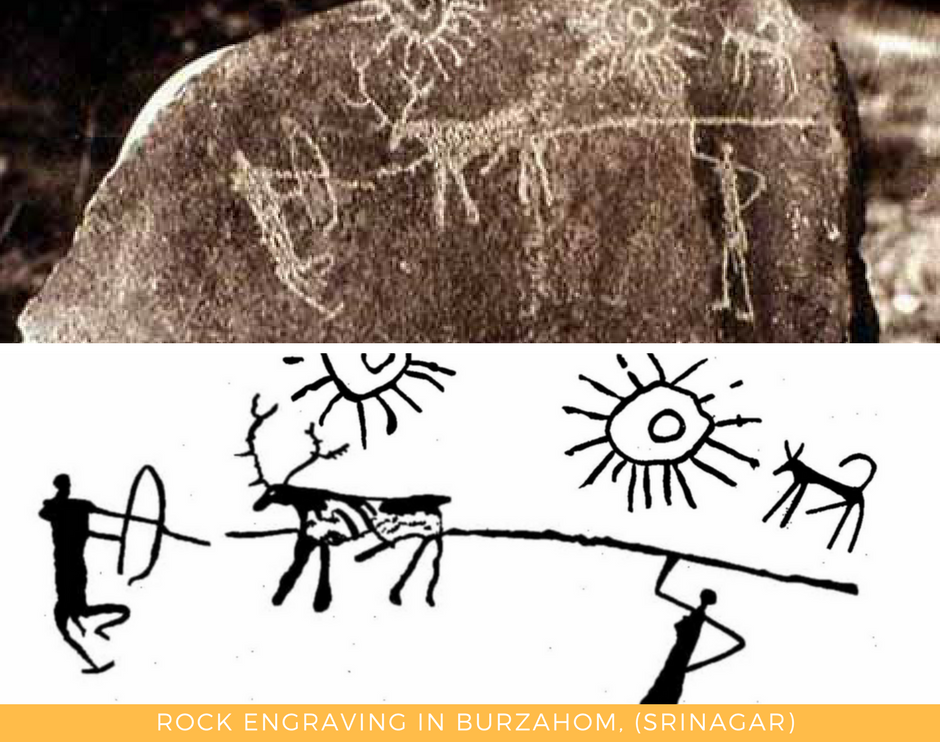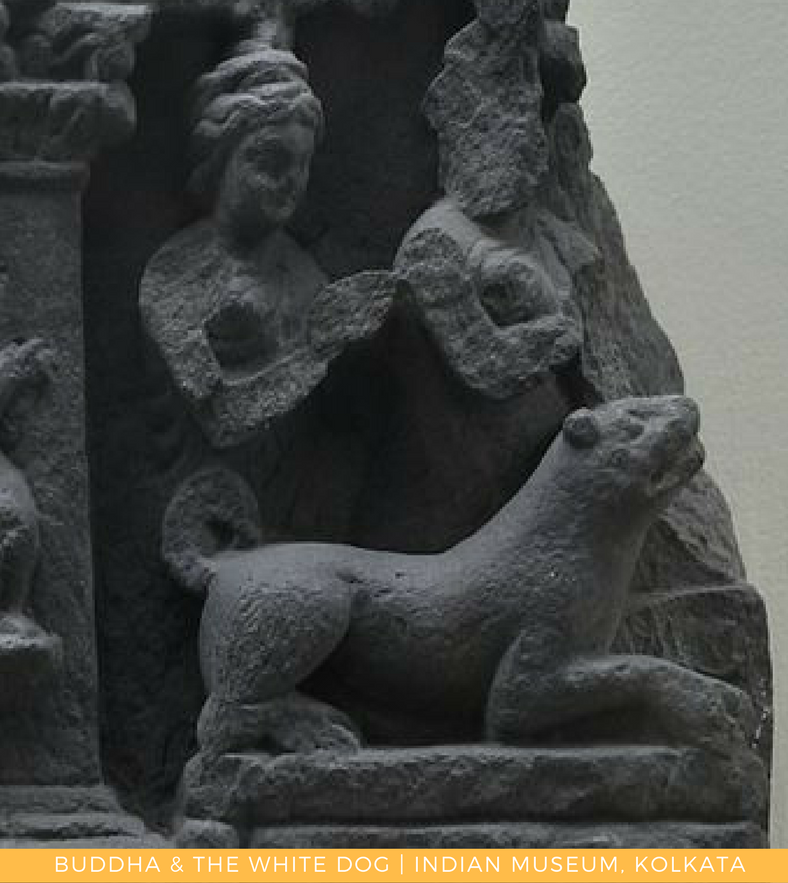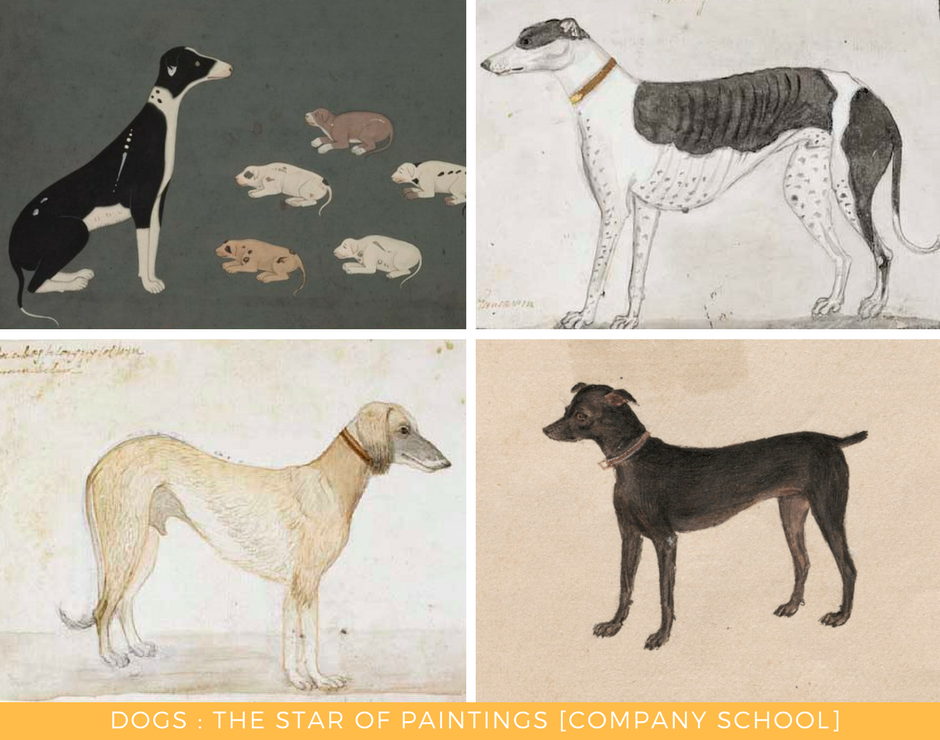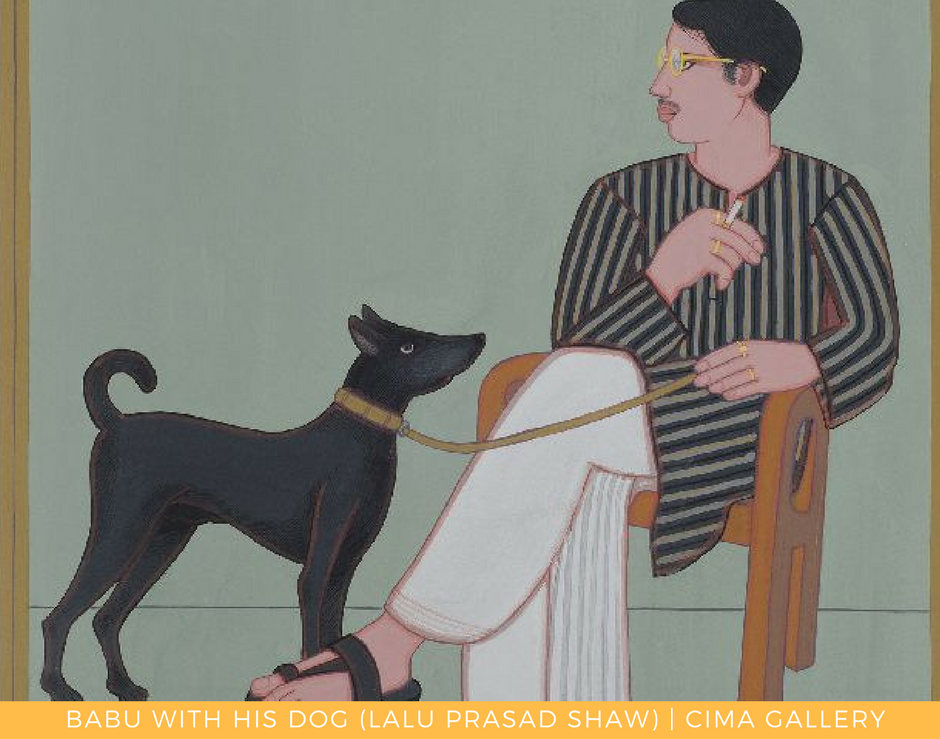Editor’s note: This is an abridged version of a very fun essay that was first published on The Heritage Lab—a wonderful resource of stories on cultural heritage, art, museums and lots more. You can find other interesting essays over at their website.
Dogs in Indian Art
Dogs have been man’s companion since before the written word. The Bhimbetka caves and other prehistoric rock paintings dating back 30,000 years ago, have provided archaeologists with evidence of domesticated dogs. In his detailed study ‘Prehistoric Rock Paintings of Bhimbetka’ (Abhinav Publications, New Delhi, 1984), Yashodhar Mathpal lists 41 drawings of dogs in the famous Bhimbetka rock shelters in Madhya Pradesh (Central India). Dogs were seen as loyal companions, hunters, guardians and as a treasured part of the family.
The picture below features a rock engraving at Burzahom, Srinagar:

Dogs in Ancient Indian Art
In the oldest story from the Rig Veda, dogs appear in an elevated role as the companion of Bhairava (a form of Lord Shiva). Lord Indra’s pet on the other hand is the celestial bitch Sarama—the mother of all dogs. Even Yudhishthir, the oldest of the Pandava brothers takes a dog-companion while trekking up to Heaven only to realise it was Dharma in the form of a dog, testing his commitment and loyalty.
 Dogs also featured in the everyday lives of the Indus Valley people as we know them. In Ropar, an excavation revealed a dog buried with his master in addition to bronze and clay models (probably toys) of dogs.
Dogs also featured in the everyday lives of the Indus Valley people as we know them. In Ropar, an excavation revealed a dog buried with his master in addition to bronze and clay models (probably toys) of dogs.
Dogs in Early Indian Art
Other representations of dogs in early Indian art can be seen at Ajanta caves depicting Jataka tales. One of them is the Mrig Jataka in Cave 17. In this Jataka, the King sets out and captures a golden deer for his Queen and returns with it in his chariot. Men with dogs on leashes (part of the hunting team), follow the chariot.
 In yet another Jataka on a Barhut stupa relief, there’s a tale of two dogs, cats and a rishi. This is a tale where the rishi sits with a bowl of fish; the cats fight over the head and tail of one fish and while one dog walks away with a bone, the other waits patiently.
In yet another Jataka on a Barhut stupa relief, there’s a tale of two dogs, cats and a rishi. This is a tale where the rishi sits with a bowl of fish; the cats fight over the head and tail of one fish and while one dog walks away with a bone, the other waits patiently.

The Buddha connection with the dog doesn’t end at Jataka tales. The above and hara-art relief tells a story in which the Buddha visits a merchant’s home and is greeted with the barking of his white dog. Buddha and the Dog have a conversation upon which the dog refuses to eat, and curls up into a ball, evidently sad about something. Seeing his dog unhappy, the merchant is furious and calls on Buddha who tells him of the Dog’s past life karma and a way of attaining better karma.
Dogs in Medieval Indian Art
In South India, the medieval times saw Dog-paintings within temples too! In Lepakshi, at the Veerbhadra temples you see an image of a family with a pet dog; a Chola era mural of a dog was also found in the inner precincts of the Big Temple at Thanjavur. According to experts, its features are said to be aligned with the breed Alangu.

Dogs in Miniature Paintings
In the Mughal palaces, dogs were very cared for. There was one keeper for every two hunting dogs.

Akbar’s biography highlights that the Emperor liked dogs so much that he imported different breeds from distant lands. His favourite dog was named Mahuwa.

Even Jahangir is said to have requested English hunting dogs from the ambassador Sir Thomas Roe. The tradition of collecting and keeping dogs was continued by the succeeding emperors and vassal kings.

It wasn’t just the royals who had dogs as hunting-companions and pets. Ascetics, wanderers and tribesmen too, had canines as friends.

Dogs in Company School Paintings
As the East India Company grew in power, so did their influence on the art styles. With the company-school painting style, the dogs moved on to being the stars of their own painting. Maratha artist Gangaram Tambat was an artist who skilfully blended miniature traditions with the European style and created some dog-renders amidst other paintings. Here’s a selection from different museums.

Dogs in Modern Indian Art
With the growth in Indian art, artists such as Nandalal Bose experimented with different forms, moving away from the western style, adopting eastern influences. Nandalal Bose, who is credited with illuminating the Constitution of India often took inspiration from daily life of the masses. Dogs seem to be his favourite subject as he depicted them in postcards, sketches and mixed media too! Here’s one in which he uses minimal pen strokes:
 There’s also another interesting depiction of the Dog and his master by Lalu Prasad Shaw:
There’s also another interesting depiction of the Dog and his master by Lalu Prasad Shaw:



 souk picks
souk picks